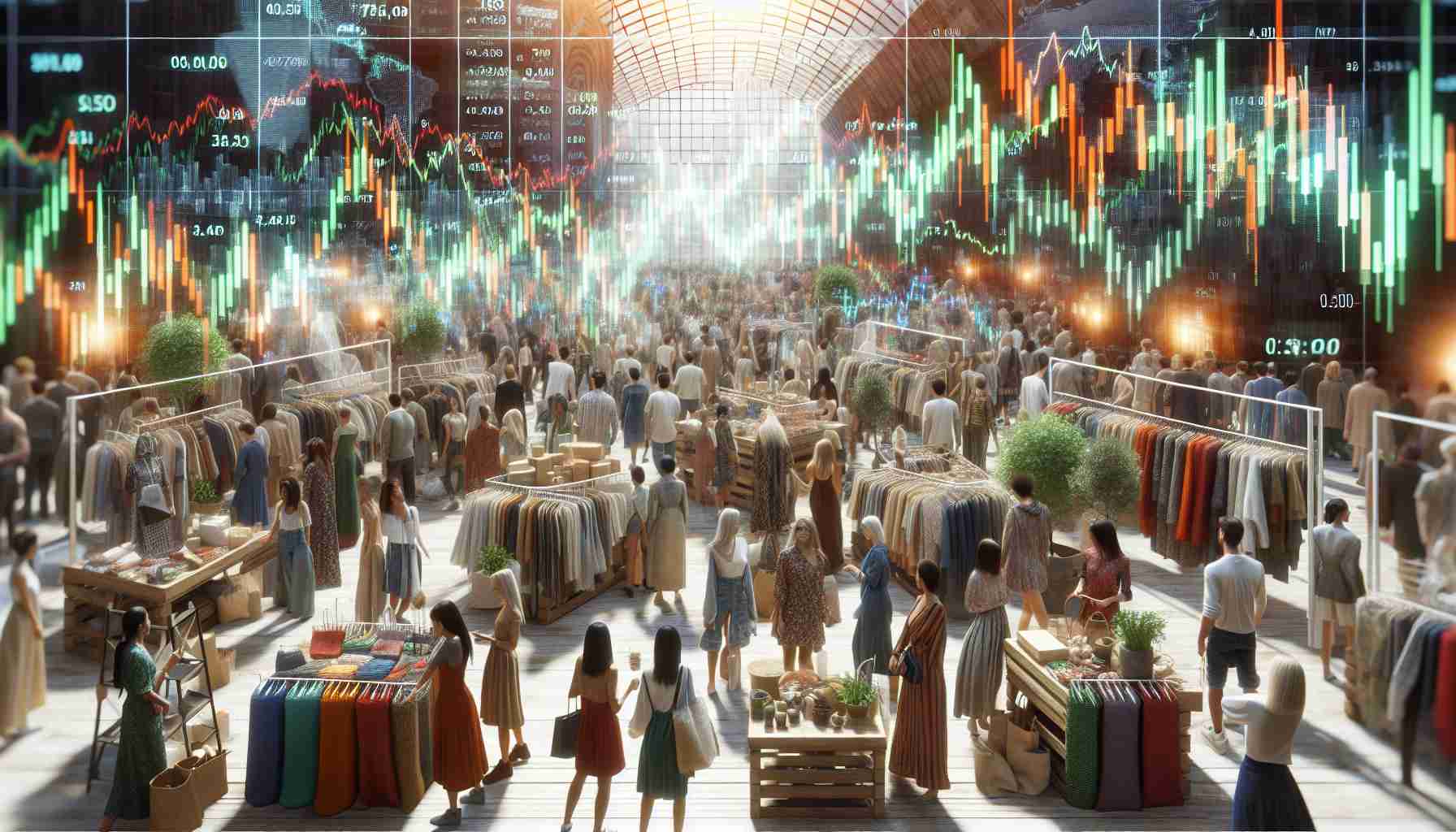Luxury fashion brands are experiencing a surge in popularity, as consumers shift towards sustainable and ethical fashion choices in light of economic uncertainties.
Recent market analysis reveals a growing trend where consumers are gravitating towards eco-friendly brands that prioritize sustainability and transparent supply chains. This shift is driven by a collective awareness of environmental issues and a desire to contribute positively to the fashion industry.
Leading the charge in this movement is a new wave of innovative designers who are challenging traditional luxury brands by offering stylish, sustainable alternatives.
This shift in consumer behavior is evident in the increasing demand for clothing made from recycled materials, organic fabrics, and ethically sourced production practices. Brands that emphasize sustainability and ethical standards are not only resonating with consumers but also attracting investor interest in the stock market.
Investors are now looking to capitalize on the growing market for sustainable fashion, recognizing the long-term potential of environmentally conscious brands.
As the fashion industry evolves to meet the demands of socially and environmentally conscious consumers, luxury brands are faced with the imperative to adapt their business models to align with sustainable practices. This paradigm shift underscores a new era in fashion where ethics and sustainability are at the forefront of consumer preferences and market trends.
The Rise of Sustainable Fashion in the Face of Economic Uncertainty
The increasing demand for sustainable fashion amidst economic uncertainty has sparked a transformation in the way consumers perceive and engage with the fashion industry. While the previous article highlighted the surge in popularity of luxury fashion brands focusing on sustainability, there are additional factors and questions that delve deeper into this growing trend.
What are the key driving factors behind the rising demand for sustainable fashion?
Consumers are increasingly conscious of the environmental impact of their purchasing choices, leading them to seek out brands that champion sustainability and ethical practices. The desire to align personal values with consumption habits has fueled the demand for eco-friendly clothing options, pushing traditional fashion houses to rethink their production methods.
Key Challenges and Controversies:
One of the main challenges facing the sustainable fashion movement is the need for greater transparency throughout the supply chain. Ensuring that materials are ethically sourced, production processes are environmentally friendly, and labor conditions are fair remains a complex issue for many brands. Additionally, there is ongoing debate about the true sustainability of certain materials and practices, highlighting the need for clearer industry standards and certifications.
Advantages and Disadvantages of Sustainable Fashion:
One of the primary advantages of embracing sustainable fashion is its positive impact on the environment. By reducing waste, minimizing carbon footprint, and supporting ethical production, sustainable fashion has the potential to drive meaningful change within the industry. Moreover, brands that prioritize sustainability often enjoy a loyal customer base and positive brand reputation.
However, one of the disadvantages of sustainable fashion lies in the potential higher costs associated with producing eco-friendly garments. This can make sustainable fashion less accessible to a wider range of consumers, limiting its scalability and mainstream adoption. Balancing sustainability with affordability remains a key challenge for brands aiming to make a significant impact on the market.
As the demand for sustainable fashion continues to rise, it is crucial for brands to address these challenges and controversies proactively. By setting clear goals, investing in innovation, and fostering greater industry collaboration, the fashion industry can pave the way for a more sustainable and ethical future.
For further insights on sustainable fashion and ethical practices, visit Fashion Revolution.



